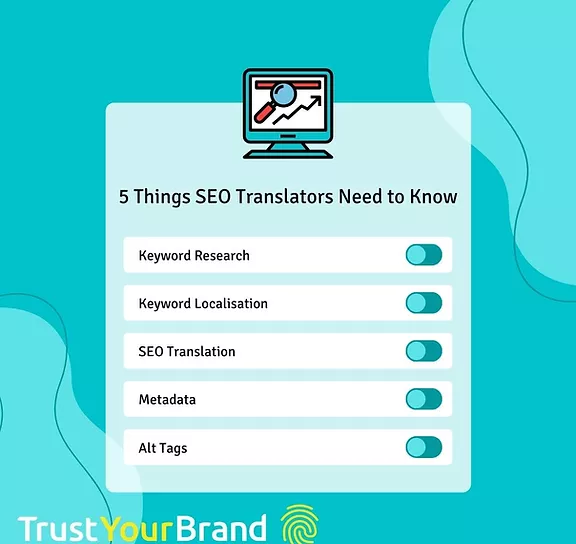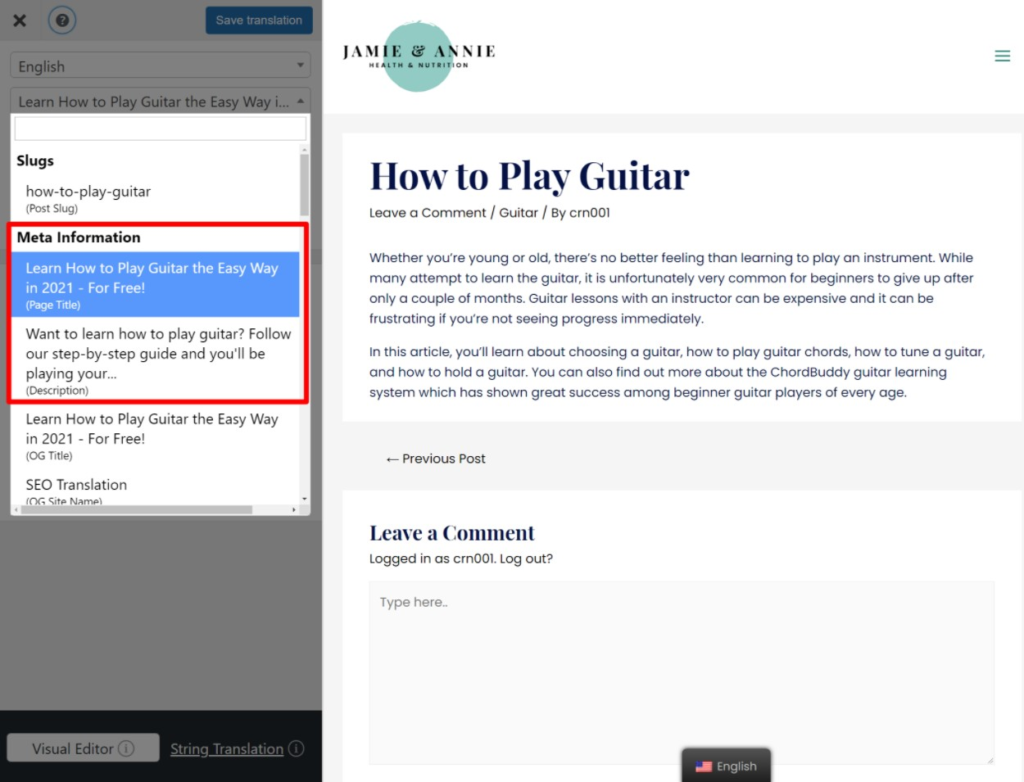What Is SEO Translation, and Why Is it Important?

First, to understand SEO translation, it is important to understand what SEO means. SEO stands for search engine optimization, essentially meaning techniques to make your page rank on search engine results pages (SERP).
SEO translation isn’t your quintessential translation. It’s not the literal translation of the content, but a process wherein you translate your website in a way that it ranks on SERPs in the target language. An SEO translator needs to be well-versed with both the source and target languages, as well as have extensive knowledge about SEO techniques.

The translator needs to make the page appealing to the search engine algorithm as well as to the human readers. They should concentrate on SEO elements, such as keywords, meta tags, script messages, and other attributes that improve a web page’s searchability.
Keywords are extremely important in SEO. The relevance of keywords may differ with the language. For example, when translated into another language, the keyword of the original text may no longer be relevant to the context. So, to optimize the page, the keywords need to be converted in the targeted language in a manner that reflects well in search engines.
The Importance of SEO Translation
SEO website translation allows you to reach out to people from all across the world. It helps you get rid of the language barrier, while also being relevant to the search intent of your target audience. You can connect with the global audience and get top rankings on the search engine of the specific region by making your website accessible in multiple languages. For instance, translating your website in Hindi will make it possible for users searching for results in Hindi to find your website.
Multilingual SEO makes your brand accessible to all. By making your brand appealing to the culture of a particular nation, you not only improve the user experience, but also strengthen the customer relationship with your brand. In the long term, it builds brand equity and goodwill.
SEO content translation improves the user experience on your website, which makes visitors stay on your platform for longer. And reduced bounce rates make Google believe your site has great content.

Top 6 Tips for SEO Translation
Here are the top tips to effectively conduct SEO translation.
1. Conduct keyword research
You need to do thorough keyword research before you start translating. Every language has its own phrases, idioms, rules, and colloquialisms that need to reflect in your keywords. Hence, you need to be fluent in your target language. Here are some steps to conduct successful keyword research:
- Create a “seed keyword,” which will be focused on the main theme of your website.
- Use keyword research tools to analyze the search volumes of seed keywords.
- Now, pick up the relevant keywords from the results. And if you don’t find these keywords relevant, try a different seed keyword. The main criterion of keyword selection is relevance to a specific URL, search volume, and keyword difficulty.
2. Research keywords in the target language
Now, conduct deep research of what people are searching for in the target language. Don’t literally translate the original focus keyword. Most tools support keyword research in multiple languages. If you are struggling to discover keywords in multiple languages, you can try KWFinder or Ahrefs.
3. Work with a human translator
While machine translations are cheaper and quicker, it is essential for a human translator to either translate or review the work, as they understand the essence of the language more. You should never publish machine-translated text without a round of review done by humans.
4. Get your metadata in order
A good SEO translator will translate the URL slugs in addition to SEO titles and descriptions. These are the characters that appear after the domain name, such as jazz.com/howtojazz. The text following “jazz.com” is your entire slug, and must be translated along with everything else.

This gives search engines and humans important information about the page’s content. The URL slug is an excellent place to include your focus keyword. The most common method is to choose a different primary keyword for each page of a website, and include it in the meta title, meta description, and URL.
By including keywords in the metadata, you are telling internet users that they are on the right track to search for what they are looking for, increasing the likelihood that they will click on the result and visit the website. When creating metadata, keep the following things in mind:
- Make the meta title as relevant to the page as possible.
- The meta title has between 40 and 60 characters, including spaces.
- A meta description accurately describes the landing page.
- It is made up of 140-156 characters, including spaces.
5. Use alt text

Alt text is information that describes a web page’s image, and is used for people who cannot see the image. Because images usually represent relevant things that are discussed in the content, translators only need to describe what the image is about. It’s even better if the description (up to 60 characters) includes a relevant keyword for the page. Alt text gives search engines greater context about your content.
6. Avoid relying entirely on machine translation
Google recommends using a robots.txt file to prevent search engines from crawling the automatically translated content, if you use it. Because automated translations frequently contain errors (and some bits may not make sense to Google), the text may be flagged as spam. Text that is machine-translated also often fails to carry the linguistic nuances of the original version. After machine translation, the best thing to do is to manually review the content. This will help you avoid mistakes and make your content Google-friendly.
Using SEO translation in various languages can be time-consuming, but the benefits far outweigh the effort when done correctly. When translating content for SEO, make sure you use the relevant keywords and follow all the SEO best practices.
FAQs
Multilingual SEO is the process of optimizing your website’s content for different languages. This helps your content be found in new markets and by people from different countries through organic search.
Your SEO website translation strategy will be severely harmed if you use Google Translate to generate raw copy in a foreign language and publish the content without any human revision or editing. The security of free online machine translation tools is another issue.
SEO localization is the process of translating your website content for a specific region. You must pay close attention to the cultural references and social attitudes when adapting your content to a new location.
Latest Blogs
Explore how Google’s 2025 AI search updates triggered ranking chaos. Learn actionable strategies to adapt your SEO for AI Overviews, zero-click searches, and SERP volatility. Stay ahead now.
Learn how to rank on AI search engines like ChatGPT, Perplexity, and Gemini by optimizing your content for authority, structure, and relevance. Stay ahead in AI-driven search with this strategic guide.
Explore the best healthcare SEO services for your medical practice. Improve online visibility and effectively reach more patients in need of your services.
Get your hands on the latest news!
Similar Posts

Content Analytics
8 mins read
Google I/O 2025: AI Search Shake-Up & Ranking Volatility

SEO
5 mins read
Top 10 Agencies for Banking and Financial SEO Services Industry

SEO
4 mins read